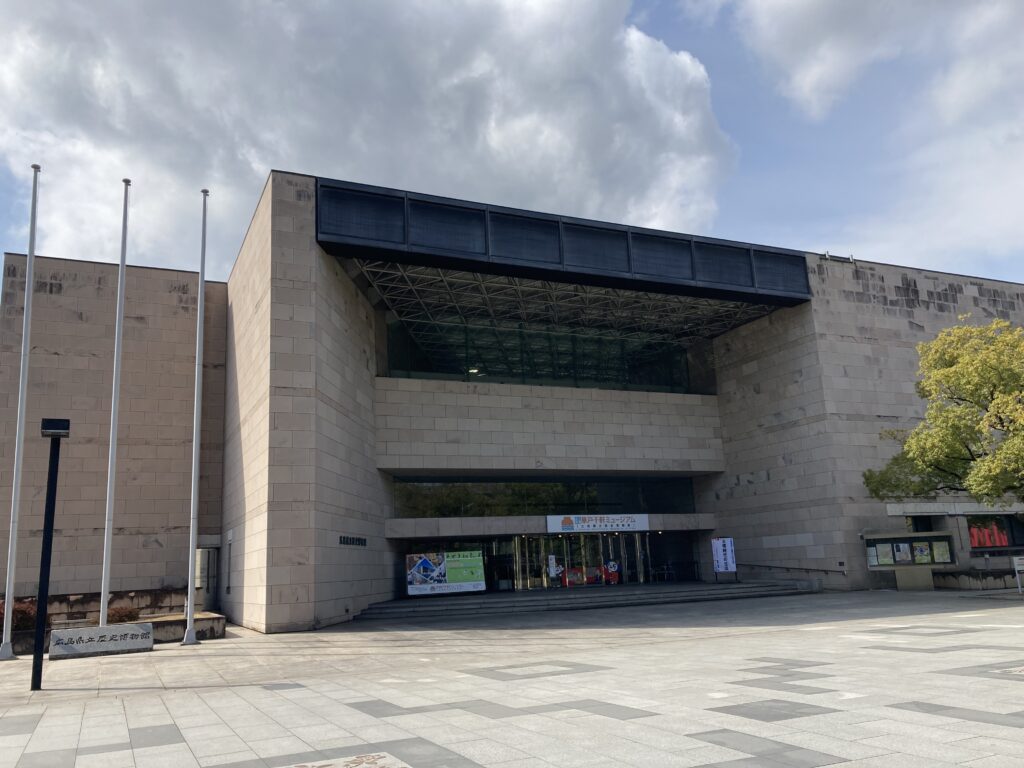
Looking for a unique museum experience near Fukuyama Castle? Don’t miss the Hiroshima Prefectural Museum of History, also known as the Fukuyama Kusado Sengen Museum!
This museum is located in Fukuyama’s “Cultural Zone,” a peaceful area just west of the castle’s third enclosure. Here, you’ll also find the Fukuyama Museum of Art and other cultural attractions, making it a great spot to enjoy both history and art at a relaxed pace.
The museum focuses on the medieval town of Kusado Sengen, which once thrived in present-day Fukuyama. Inside, you’ll find artifacts excavated from this real historical site, and even a life-size recreation of the town streets, allowing you to walk through a medieval Japanese village as it once was!
Kusado Sengen was a key hub for transportation and trade in the Seto Inland Sea region. Its archaeological significance is so impressive that it’s often called the “Pompeii of Western Japan.” Through the museum’s exhibits, you can get a vivid picture of everyday life in medieval coastal Japan.
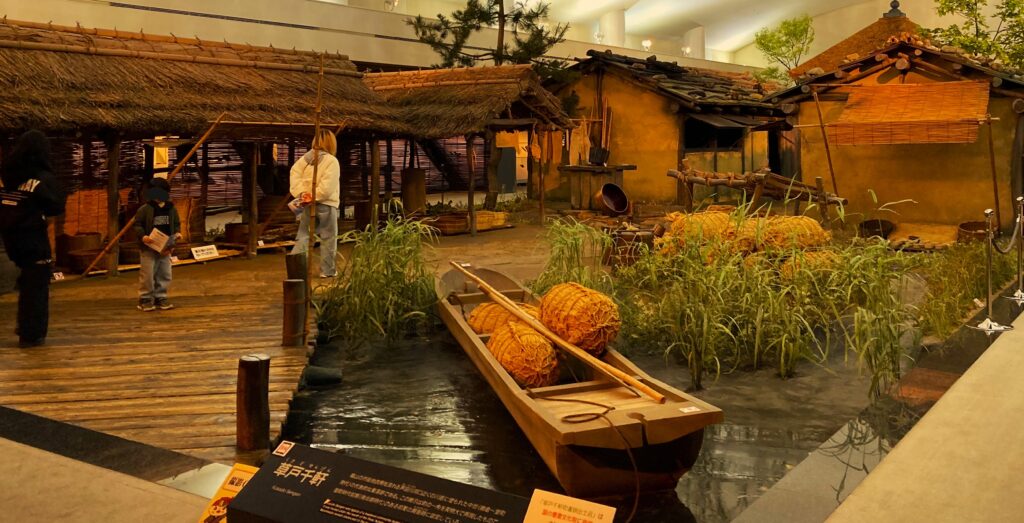
What Was Kusado Sengen?
Let’s take a closer look at Kusado Sengen, the town at the heart of this museum’s story.
Kusado Sengen was a medieval port town that flourished between the 13th and 16th centuries, during Japan’s Kamakura and Muromachi periods. It was located near the mouth of the Ashida River, in what is now part of modern Fukuyama.
Despite its prosperity, the town mysteriously disappeared—leaving behind ruins and a fascinating mystery.
Where Was Kusado Sengen Located?
Although the exact size of Kusado Sengen is still unknown, the ruins have been found along the Ashida River near the Kojima Bridge, about 400 to 500 meters downstream.
Explore Kusado Sengen Reborn: A Life-Size Medieval Town Inside the Museum


One of the highlights of the Hiroshima Prefectural Museum of History is its immersive, full-scale recreation of Kusado Sengen Town, based on findings from years of archaeological excavations!
The town is set in the 14th century, during Kusado Sengen’s peak, and the museum has carefully recreated the atmosphere of early summer at dusk. The lighting has a reddish glow, creating a slightly dim and mysterious vibe that transports you back in time.
The Dock
The town includes canals, known as horikawa, which allowed small boats to come right into the settlement. These waterways connected to the Ashida River and the Seto Inland Sea, making Kusado Sengen a busy port town with goods transported by boat to various locations.
The Market
The recreated market area gives visitors a sense of the lively trade and daily bustle that once filled the streets of Kusado Sengen.
The Lacquerware Shop
Excavations uncovered many items related to lacquerware, such as bowls, spatulas, and brushes, showing that skilled lacquer craftsmen lived and worked here.
For a long time, historians believed that people in medieval Japan mainly used simple clay pots and dishes. But now we know that lacquerware was also widely used—even in everyday meals.
Many lacquered bowls and plates have been found in Kusado Sengen, suggesting that people here enjoyed meals with elegant utensils, just like we do today. It’s easy to feel a connection with the people of the past through these beautifully crafted items.
The Geta (Wooden Sandal) Shop
Wooden artifacts are rare because they tend to decay underground. But since Kusado Sengen was located in the delta of the Ashida River, where underground water preserved the soil well, many wooden objects have survived—including geta sandals.
The Blacksmith’s Workshop
Evidence of a blacksmith’s workshop has also been found. Items like furnace nozzles, iron slag, and whetstones have been unearthed, along with tools such as hatchets, sickles, and hoes, indicating the production of farming and carpentry tools.
Even more fascinating is a sword engraved with the phrase “Made by Hokke Ichijō of Kusado in Bingo Province.” This suggests that a group of swordsmiths from the Hokke school may have operated in Kusado Sengen.
It’s quite possible that expert sword makers once worked here, producing blades with great skill and craftsmanship.
Summary: Kusado Sengen Town and the Hiroshima Prefectural Museum of History
Kusado Sengen is one of the rarest archaeological sites in Japan—a large-scale medieval town discovered almost entirely intact. It’s considered one of the most important sites in medieval archaeology across the country.
At the Hiroshima Prefectural Museum of History, the permanent exhibit “Rediscovering Kusado Sengen” brings this lost town back to life. Thanks to years of excavation and research, the museum offers a full-scale, academically accurate reconstruction of Kusado Sengen as it looked in the 14th century. Walking through the exhibit feels like stepping back in time.
The museum also features a Historical Gallery (photography not allowed), which traces the history of the Seto Inland Sea from ancient to modern times. It’s a great place to learn not just about Kusado Sengen, but also about the daily lives of people in the region, the development of Fukuyama Bay, and the geography of the Ashida River. If you’re interested in history, geography, archaeology, or folklore, this museum is a must-visit.
Visit the Kusado Sengen Ruins
About 2 kilometers southwest of the museum, you can also visit the actual site where Kusado Sengen once stood.
The ruins are now located on a sandbank along the Ashida River. Although most of the site has already been excavated, there are no visible structures or streets left today.
In addition, the area around Fukuyama has changed dramatically due to land reclamation projects during the Edo period, so the current landscape looks very different from the medieval era. Unfortunately, there’s little remaining at the site to remind visitors of the vibrant town that once stood there.
Still, standing by the quiet river and imagining the bustling medieval town that once existed can be a peaceful and inspiring experience.
Hiroshima Prefectural Museum of History – Visitor Information
Address: 2-4-1 Nishimachi, Fukuyama City, Hiroshima Prefecture
| Access | About a 3-minute walk from JR Fukuyama Station (Fukuyama Castle Exit / North Exit) |
| Admission | Adults: ¥290 University students: ¥210 High school students and younger: Free |
| Hours | 9:00 AM – 5:00 PM (last entry at 4:30 PM) |
| Closed | Mondays (or the following weekday if Monday is a national holiday), Year-end and New Year holidays (December 28 – January 4) |
Nearby Attraction: Fukuyama Museum of Art
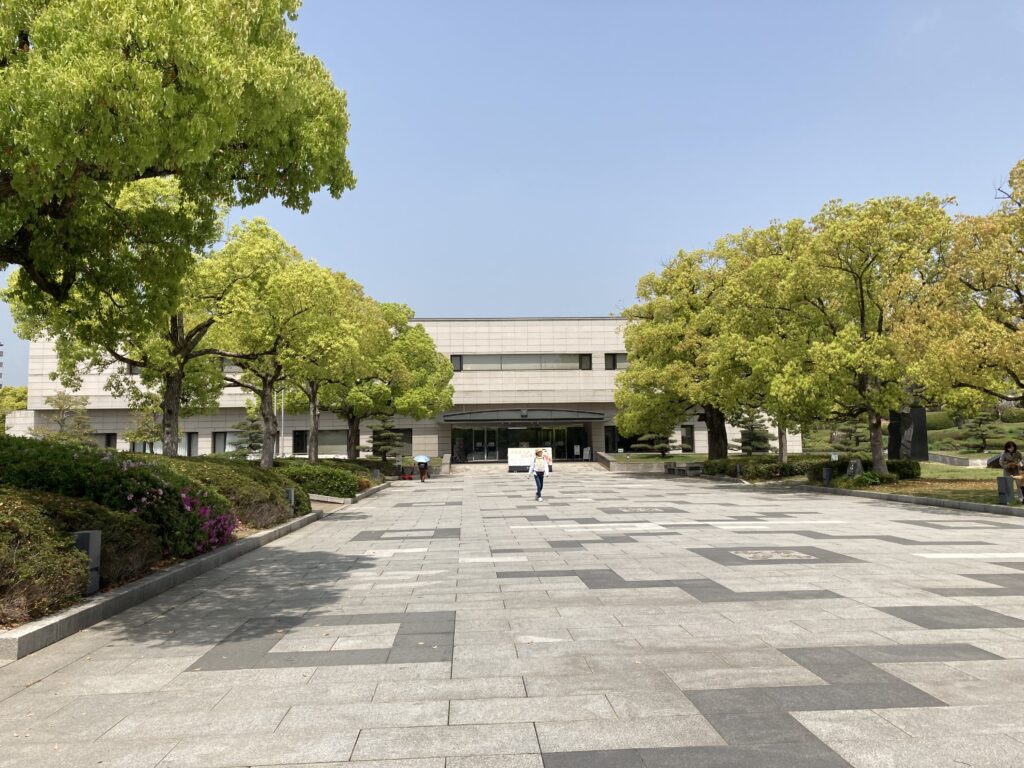

Located within the same Fukuyama Castle Park, the Fukuyama Museum of Art is just a short walk away.
This museum features modern Western and Japanese art, including works by Gustave Courbet, Kojima Torajirō, and Kishida Ryūsei. It also has a notable collection of Japanese swords.
If you’re visiting the Hiroshima Prefectural Museum of History, this is a perfect place to stop by next.
[Click here to read more about the Fukuyama Museum of Art.]
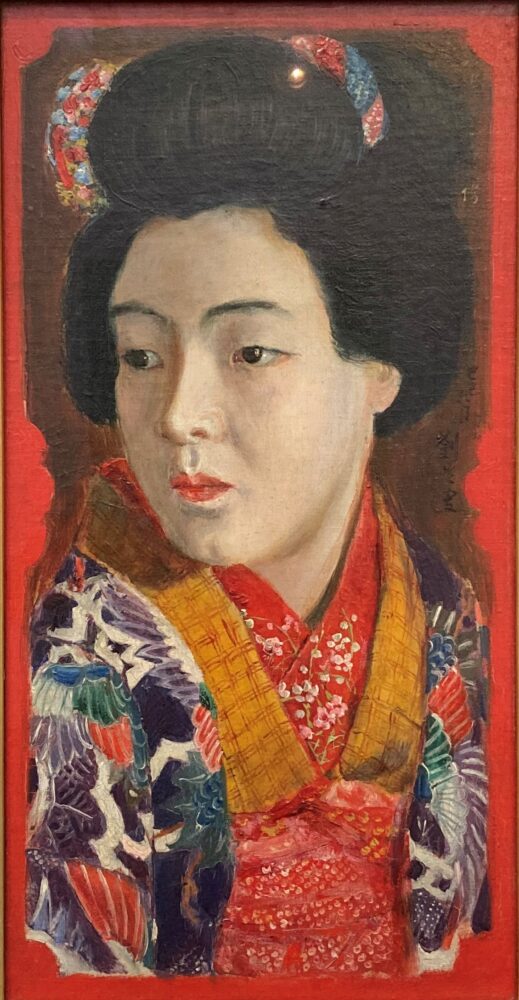

References
Yasuyuki Suzuki, Medieval Port Town: Kusado Sengen – Learning from Archaeological Sites, Vol. 040, Shinzen Publishing, October 15, 2007.
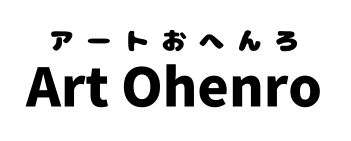




















Comments